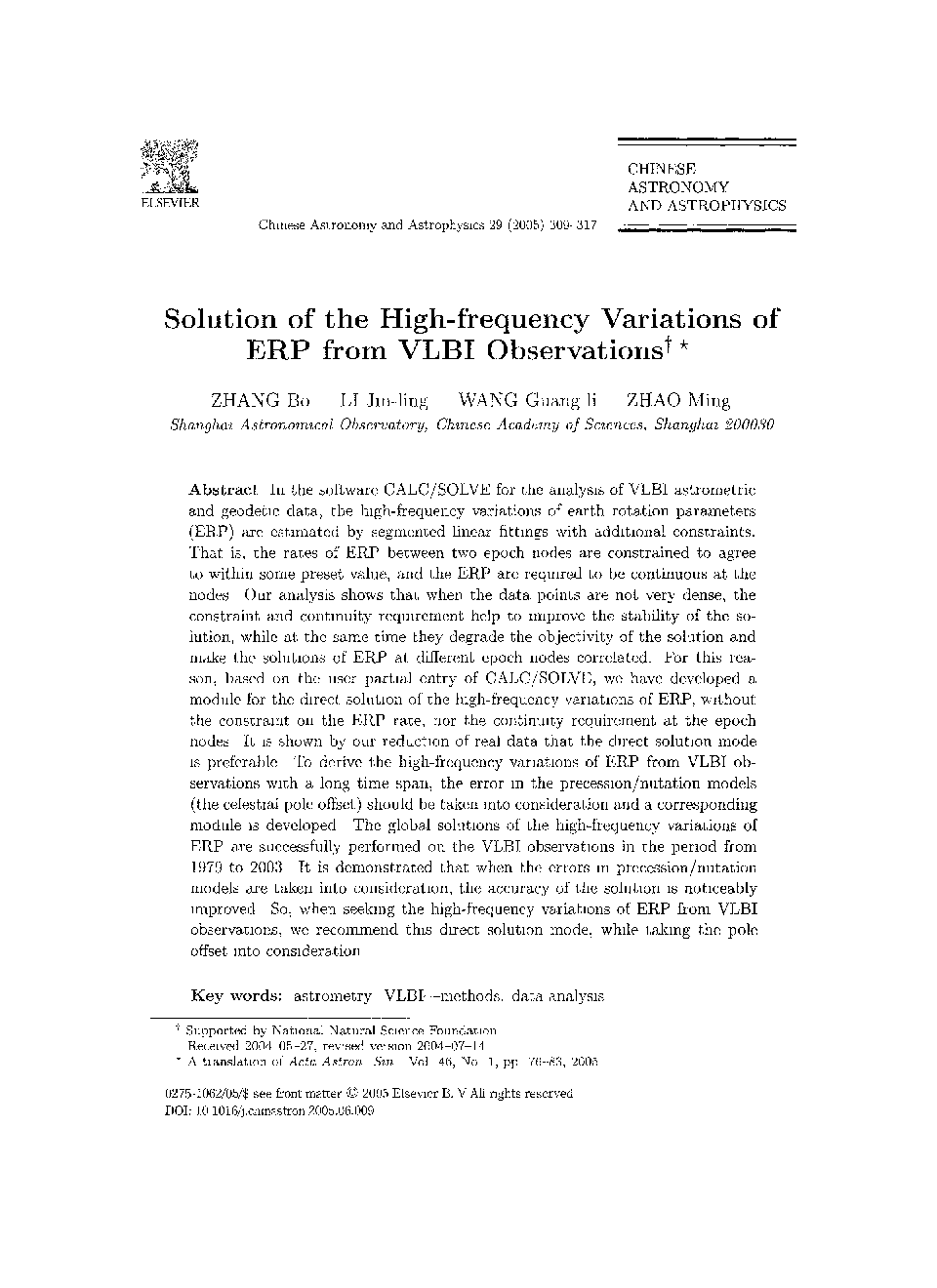| Article ID | Journal | Published Year | Pages | File Type |
|---|---|---|---|---|
| 10700968 | Chinese Astronomy and Astrophysics | 2005 | 9 Pages |
Abstract
In the software CALC/SOLVE for the analysis of VLBI astrometric and geodetic data, the high-frequency variations of earth rotation parameters (ERP) are estimated by segmented linear fittings with additional constraints. That is, the rates of ERP between two epoch nodes are constrained to agree to within some preset value, and the ERP are required to be continuous at the nodes. Our analysis shows that when the data points are not very dense, the constraint and continuity requirement help to improve the stability of the solution, while at the same time they degrade the objectivity of the solution and make the solutions of ERP at different epoch nodes correlated. For this reason, based on the user partial entry of CALC/SOLVE, we have developed a module for the direct solution of the high-frequency variations of ERP, without the constraint on the ERP rate, nor the continuity requirement at the epoch nodes. It is shown by our reduction of real data that the direct solution mode is preferable. To derive the high-frequency variations of ERP from VLBI observations with a long time span, the error in the precession/nutation models (the celestial pole offset) should be taken into consideration and a corresponding module is developed. The global solutions of the high-frequency variations of ERP are successfully performed on the VLBI observations in the period from 1979 to 2003. It is demonstrated that when the errors in precession/nutation models are taken into consideration, the accuracy of the solution is noticeably improved. So, when seeking the high-frequency variations of ERP from VLBI observations, we recommend this direct solution mode, while taking the pole offset into consideration.
Keywords
Related Topics
Physical Sciences and Engineering
Physics and Astronomy
Astronomy and Astrophysics
Authors
Zhang Bo, Li Jin-ling, Wang Guang-li, Zhao Ming,
